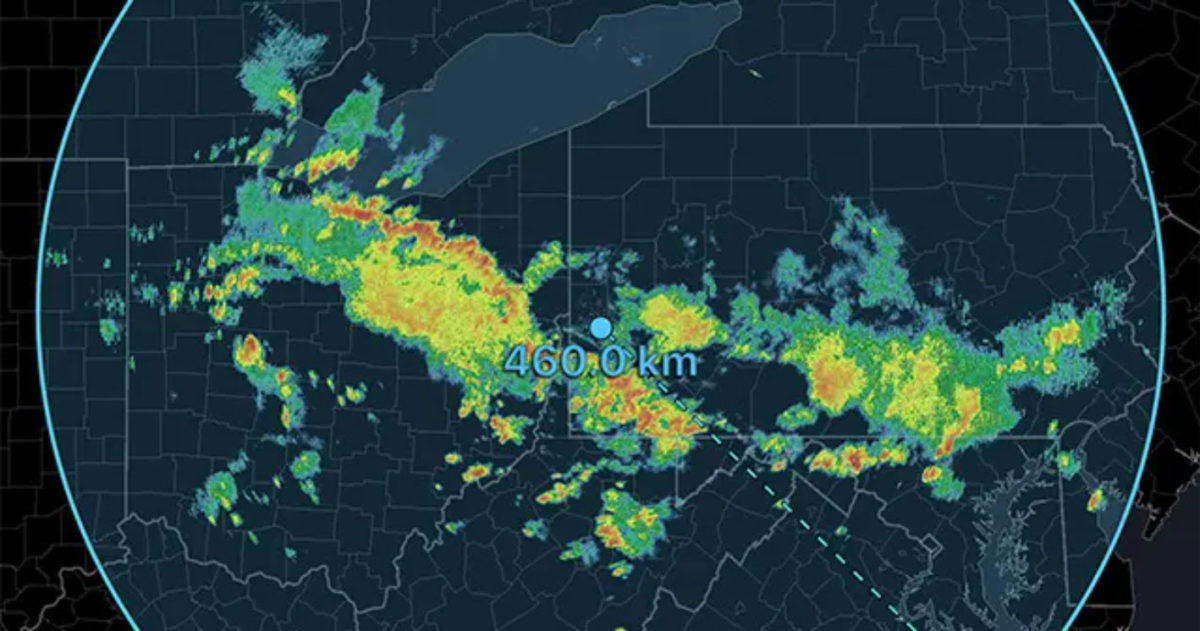Wildfires have been ongoing across portions of Montana for the past several weeks. You can see these fires on RadarScope’s dual polarization products in more detail than we could before. Base reflectivity and velocity, differential reflectivity, and correlation coefficient are the best products to use to view wildfires.
The reflectivity that you see in RadarScope is dependent upon the size and concentration of particles being observed. For instance, several small particles could have the same reflectivity as fewer larger particles. Many smoke plumes will have low reflectivity values because of the small size of the smoke particles and their relatively low concentration, as shown in the image below.
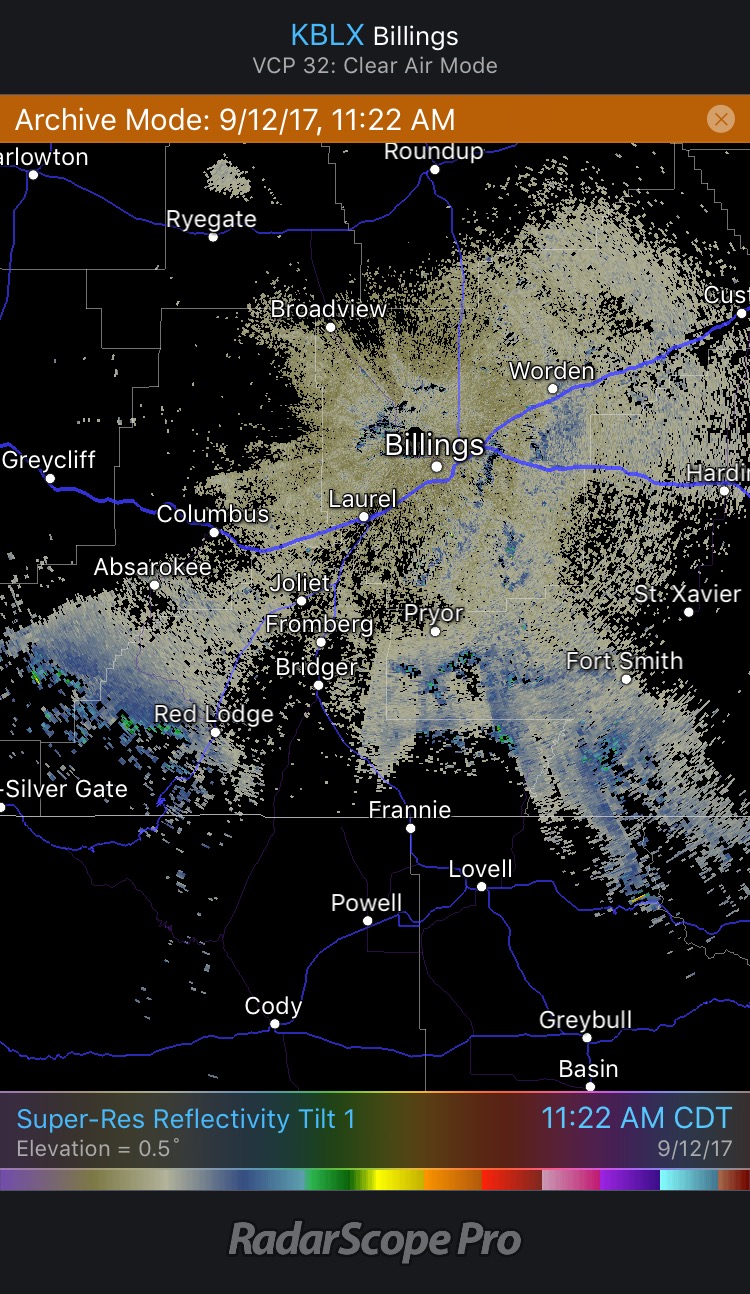 Reflectivity
Reflectivity
Velocity products can also be useful in determining where a smoke plume is headed. Red shades indicate winds away from the radar, green colors indicate winds toward the radar. Green shades near where the fires are observed indicate the plumes near Absarokee and Joliet are moving toward the northeast. From east of Joliet to east of Bridger, plumes are moving toward the south.
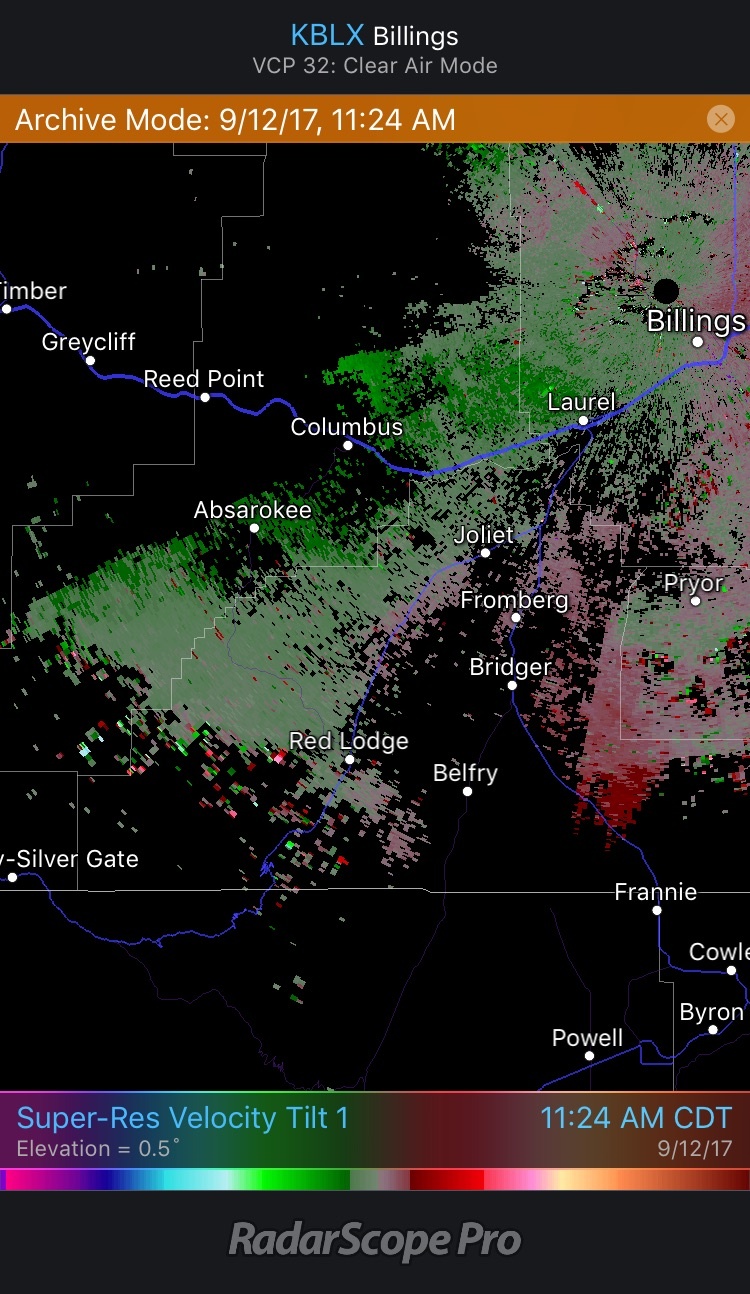 Velocity
Velocity
Dual polarization radar works by emitting both horizontal and vertical polarized waves. This allows us to obtain information about the shape and orientation of the particles the radar is observing. Differential reflectivity is dependent upon the ratio of the power returned to the radar from the horizontally polarized wave to that of the vertically polarized wave. If differential reflectivity is negative, the object observed by radar is taller than it is wide (vertically oriented); if it’s positive, then it’s wider than it is tall (horizontally oriented). If differential reflectivity is zero, then both dimensions are equal and therefore the object is spherical. Differential reflectivity in smoke plumes is strongly positive, therefore the smoke particles are horizontally oriented.
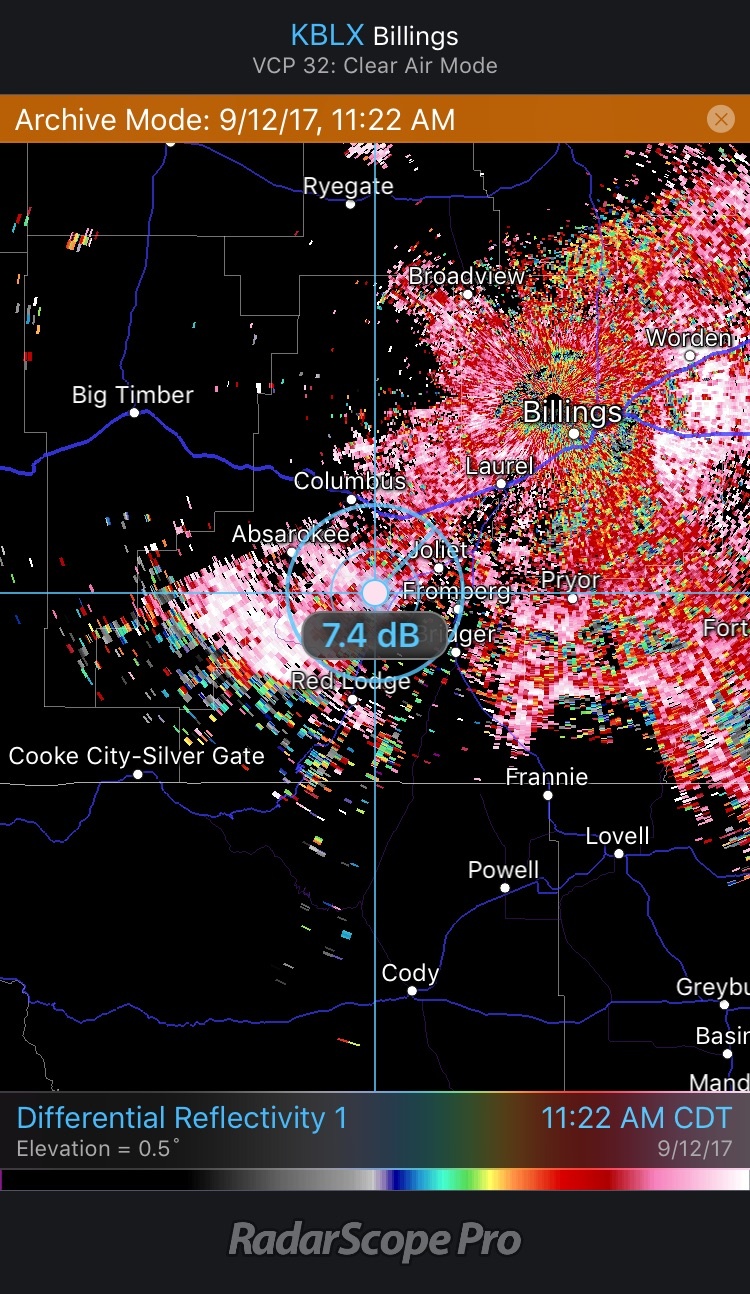 Differential Reflectivity
Differential Reflectivity
Correlation Coefficient can also be used to analyze echoes from wildfires. This product describes how similar the horizontally and vertically polarized signals are. Values less than 0.8 are generally associated with non-meteorological echoes. Values around 0.67 were observed within the echoes where the fire was located.
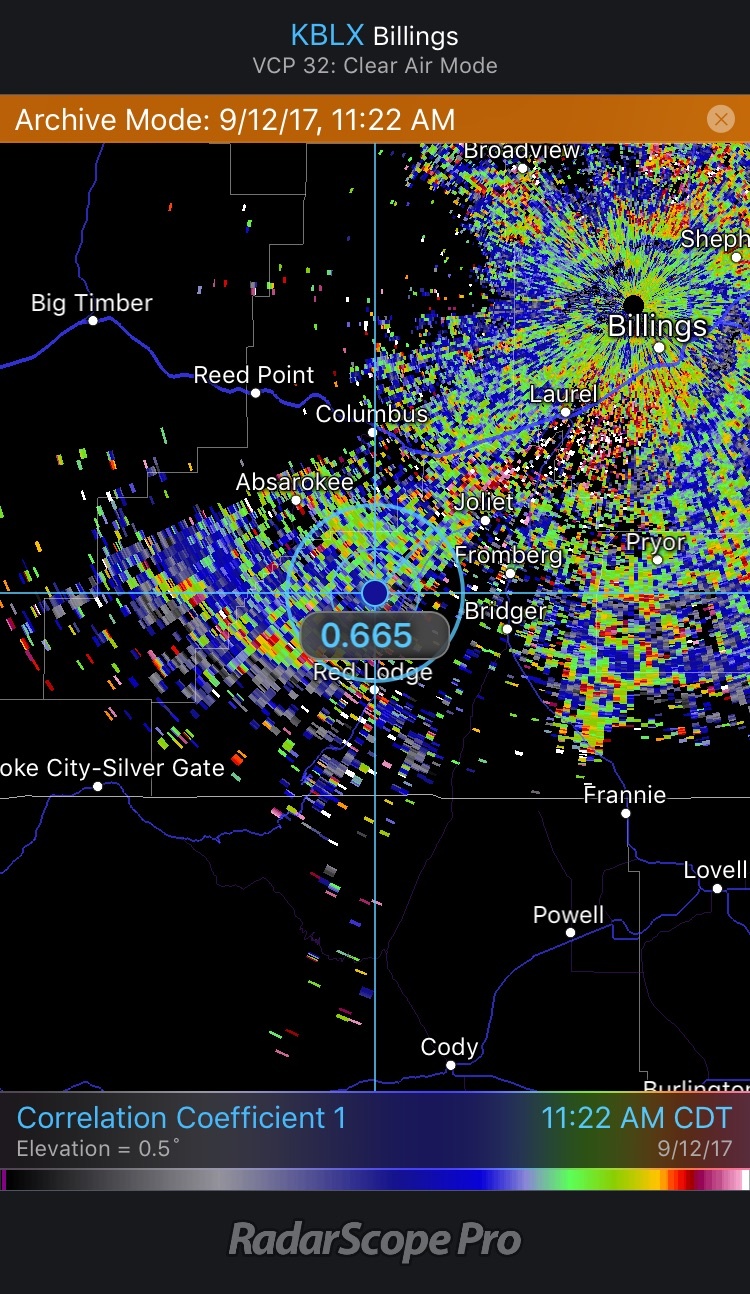 Correlation Coefficient
Correlation Coefficient
Dual polarization radar has allowed meteorologists to identify what the radar is observing with greater confidence. Therefore, it can also be used to analyze non meteorological features such as smoke plumes from fires. Try looking at these different fields next time there is a fire near your location.
{{cta(‘7adc9887-5a2e-4a2c-90de-3d3a733f8912′,’justifycenter’)}}



